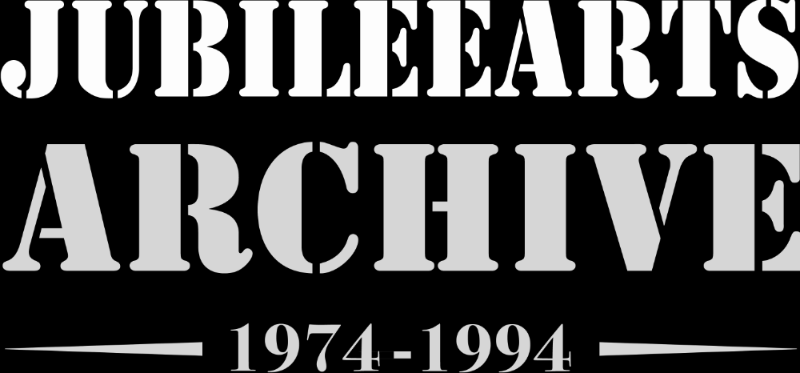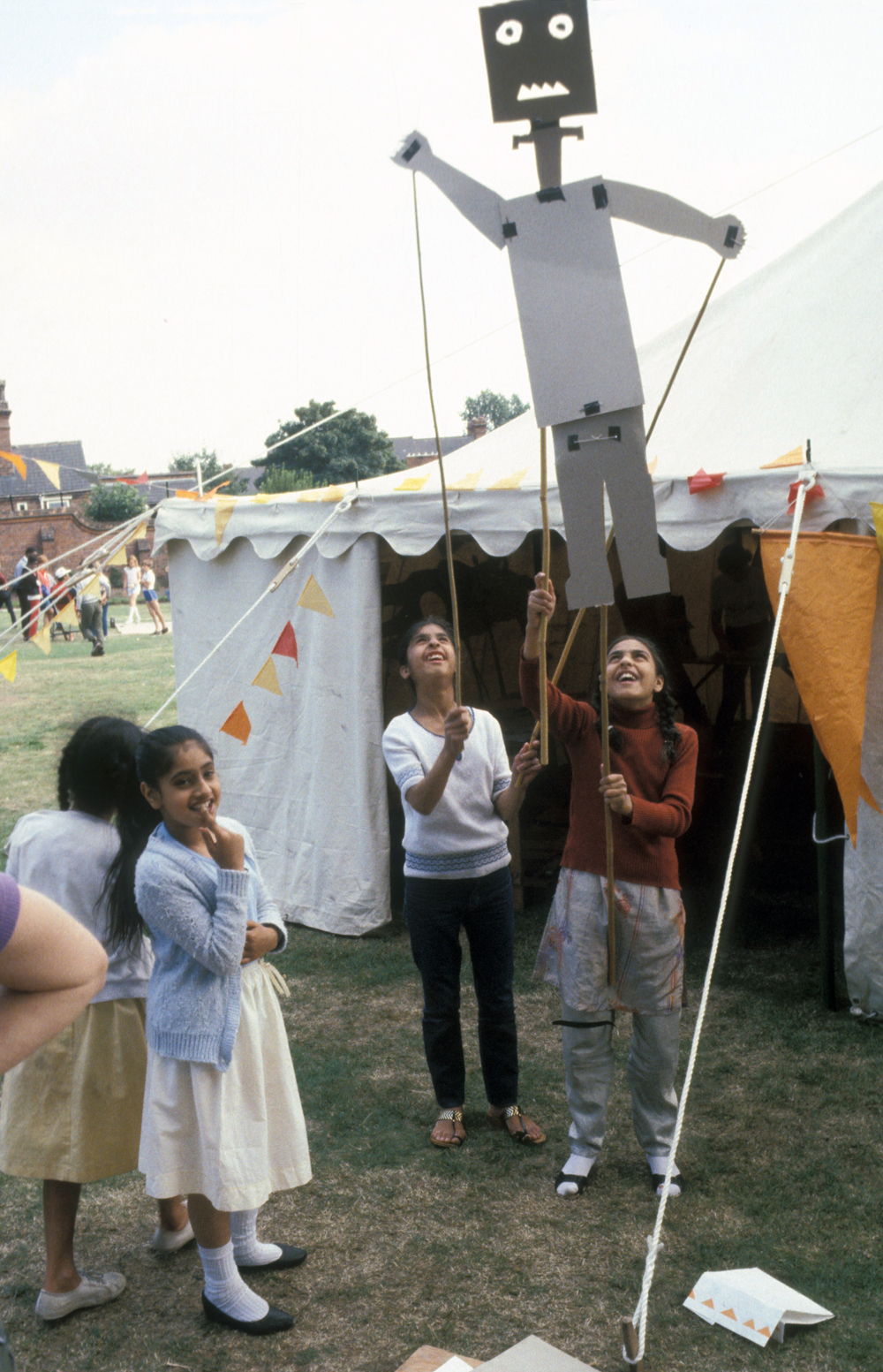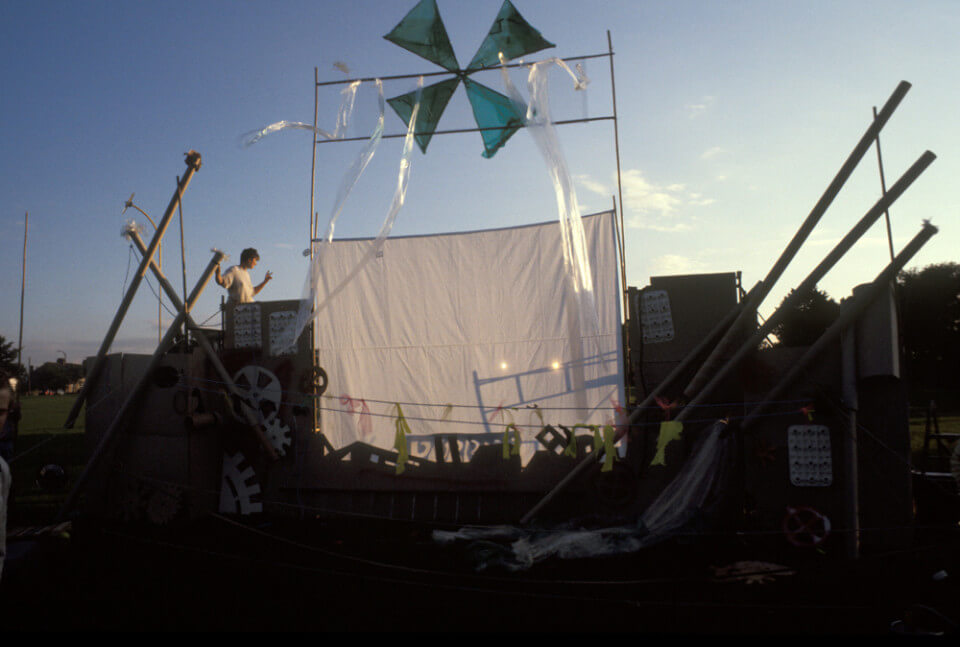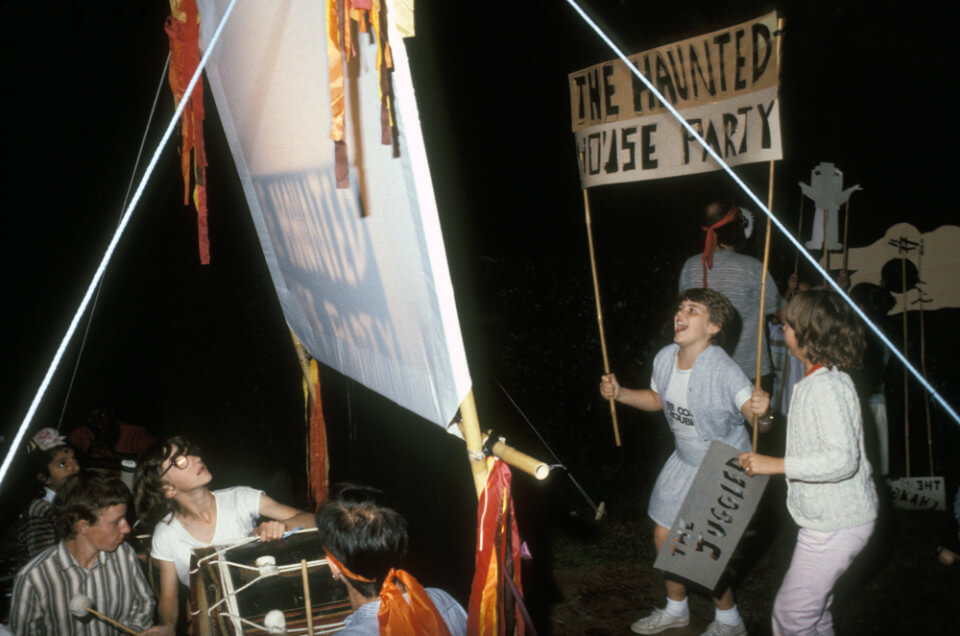By the mid-1980s, the fine art of shadow puppetry made its way onto the menu of activities of Jubilee Arts, and soon became a popular fixture at play days and community events.
Shadow puppetry as traditionally practiced in China, India and South-East Asia, involved semi-transparent leather plates coloured with dyes. Here in the Black Country, Jubilee used the following materials: firm card or cardboard, paper fasteners, wire, masking tape, gaffa tape, colour gels, sellotape, garden canes, cotton thread. Tools required: scissors, sharp knives, hole puncher, felt tips.
This photograph is from a community festival held in the grounds of the Oak House in West Bromwich.
The screen was simply a bedsheet or piece of linen, attached to wooden pole, lit by an electric light or fire torch. The shadow shows, devised and made by kids – and adults – during the day were accompanied by music, sound effects, and often with voice narration. Dancing skeletons often made an appearance. As seasons passed, the shadow screens became larger and more elaborate constructions, some requiring scaffolding, decorated with coloured sheets of plastic, and utilising smoke effects.
Kids across the generations who watched the BBC programme ‘Blue Peter’ will know it had a regular feature on makings arts and crafts from everyday household items, but we have no memory of them ever making a shadow puppet. Others may have seen the work of Charlotte ‘Lotte’ Reiniger (1899 – 1981), a German filmmaker and silhouette animation pioneer, lived and worked in England from 1949 and made a series of short films for the BBC based on Grimm’s Fairy Tales. Many artists have been inspired to use shadow puppets or silhouette in their work. One contemporary American artist, Kara Walker, creates cut-paper silhouettes to explore legacy of slavery and racial and gender stereotypes. Even the Royal Academy has a guide to making shadows puppets on their website. Even the Royal Academy suggests you try it for yourself.






